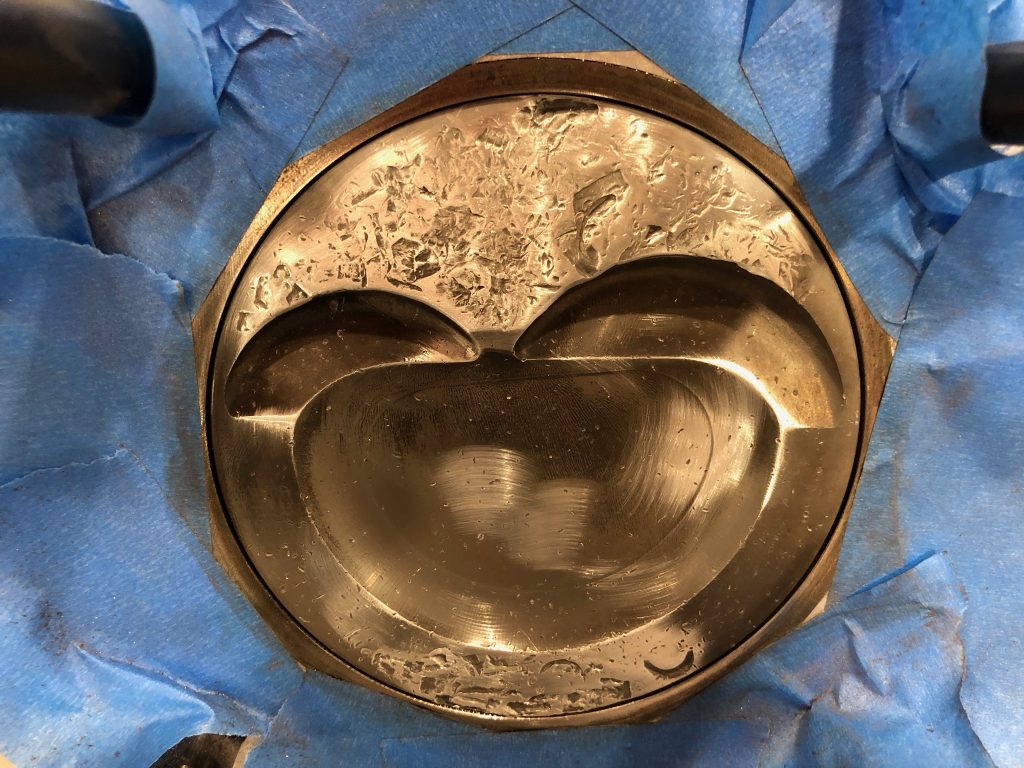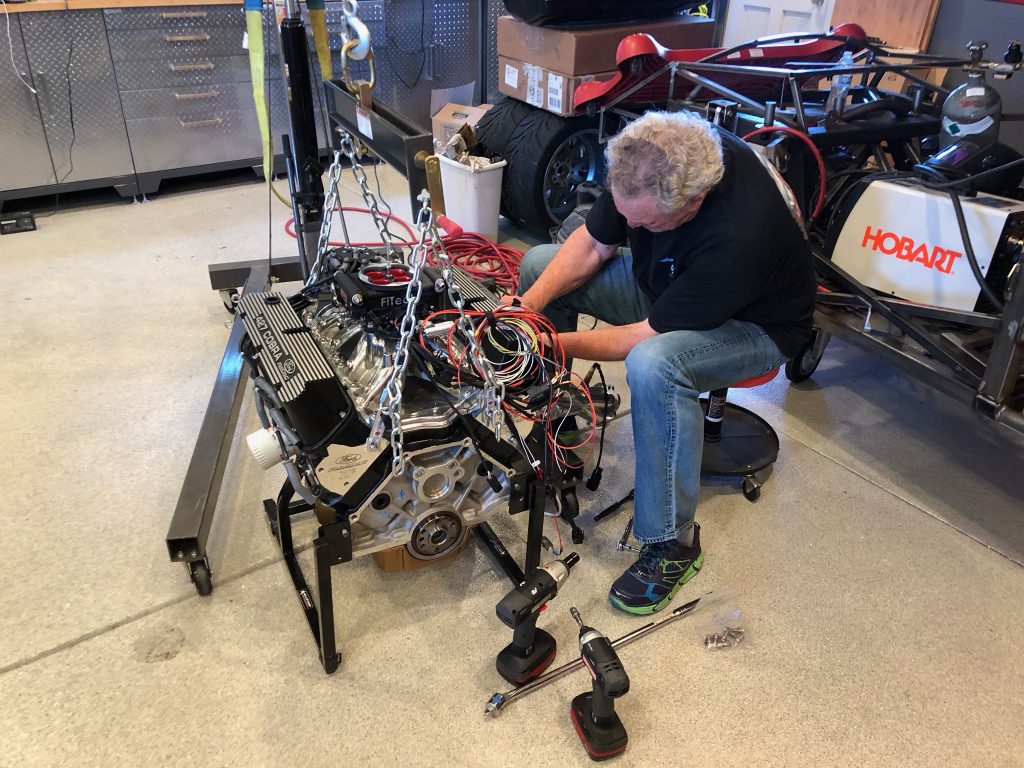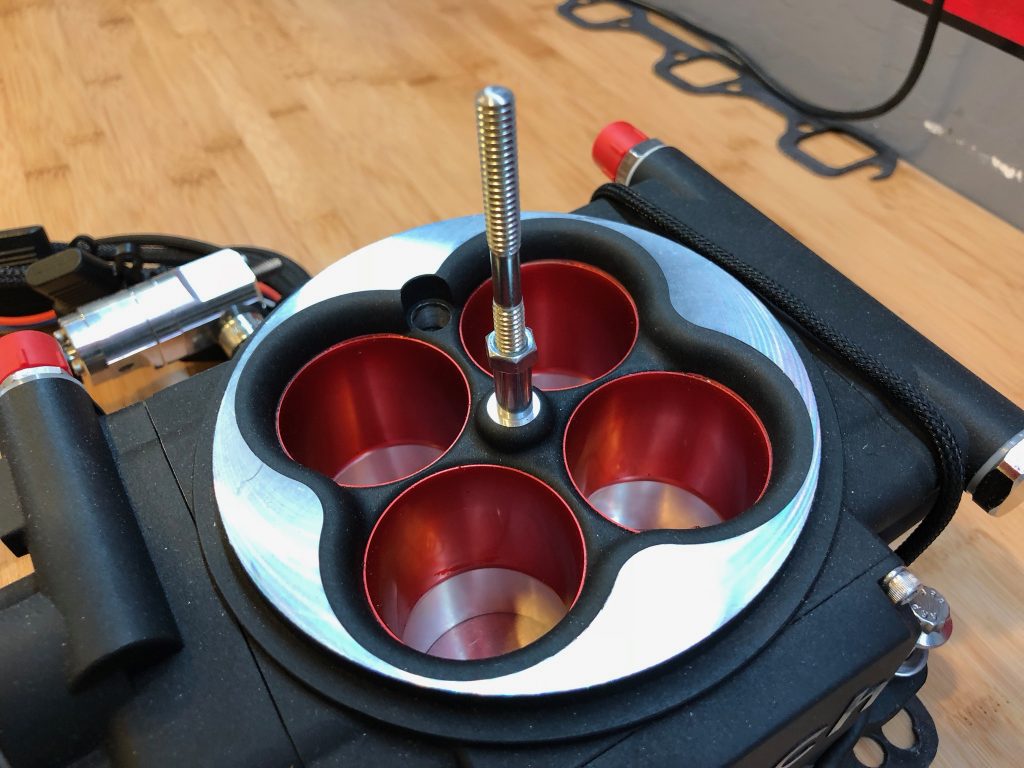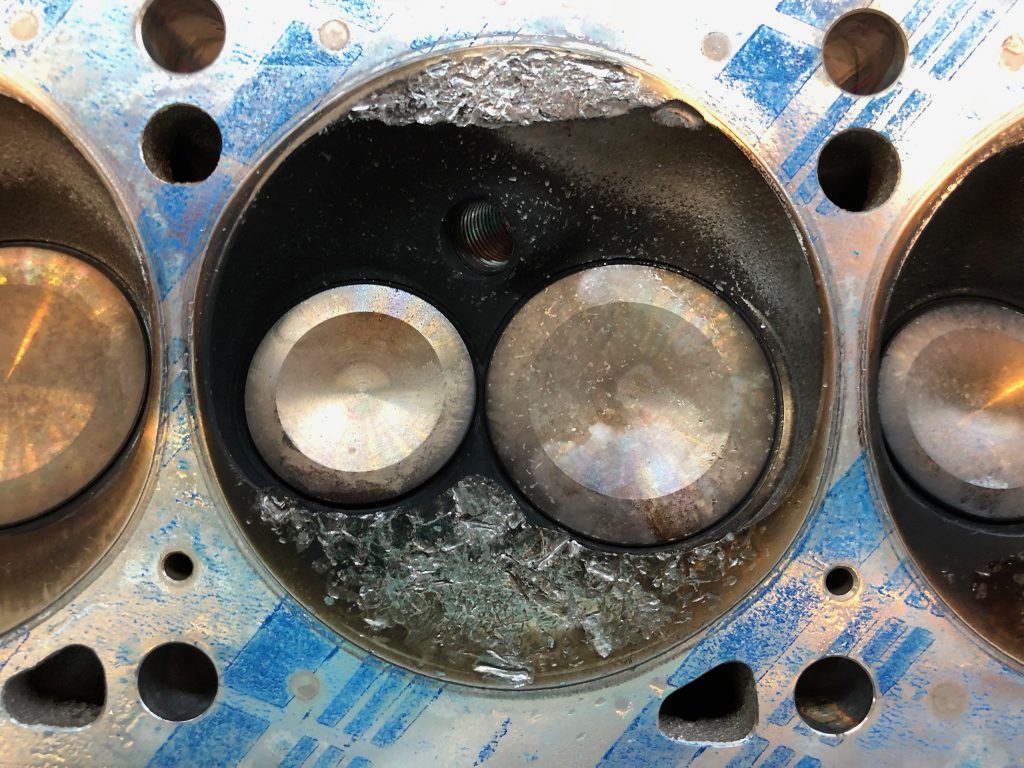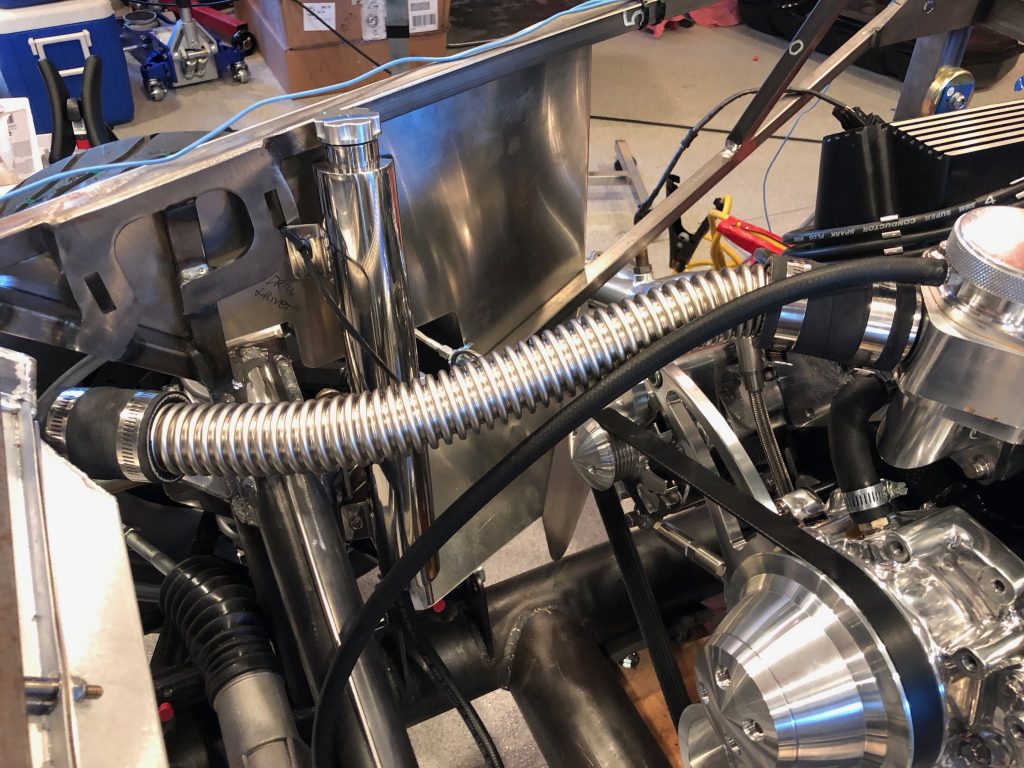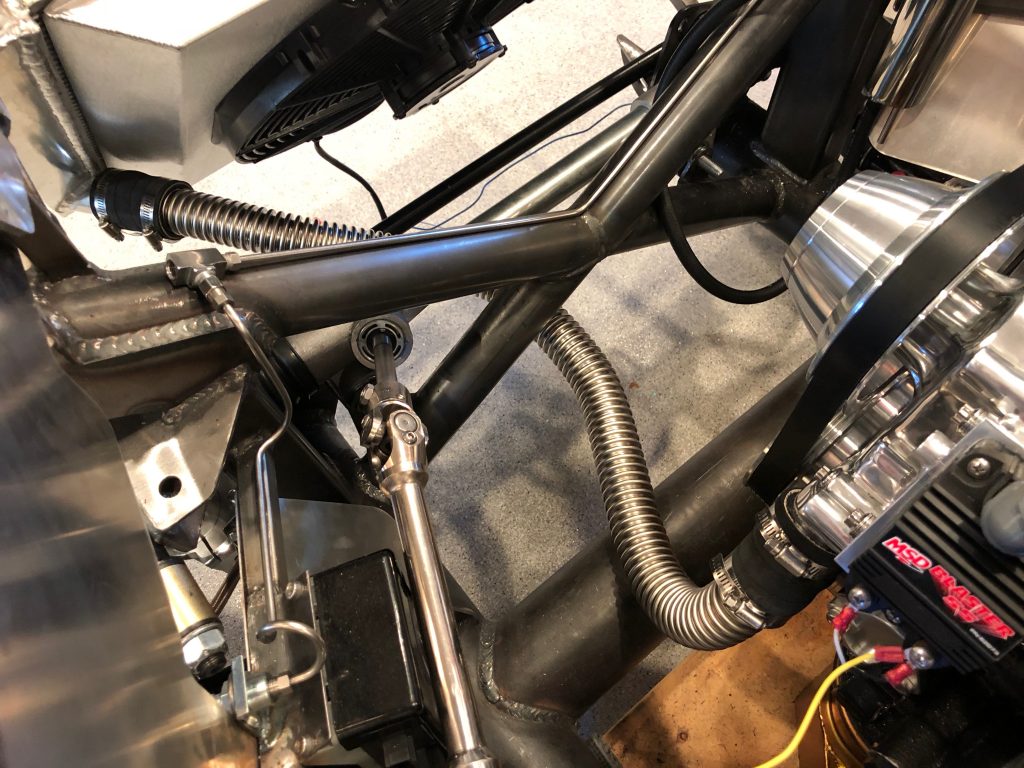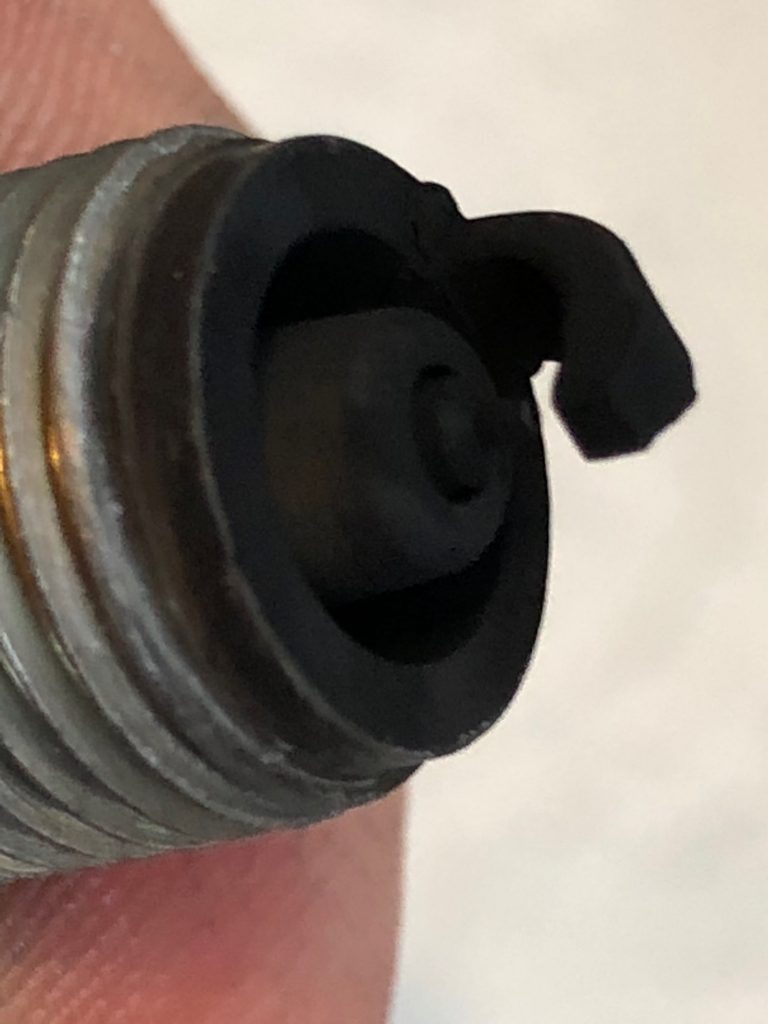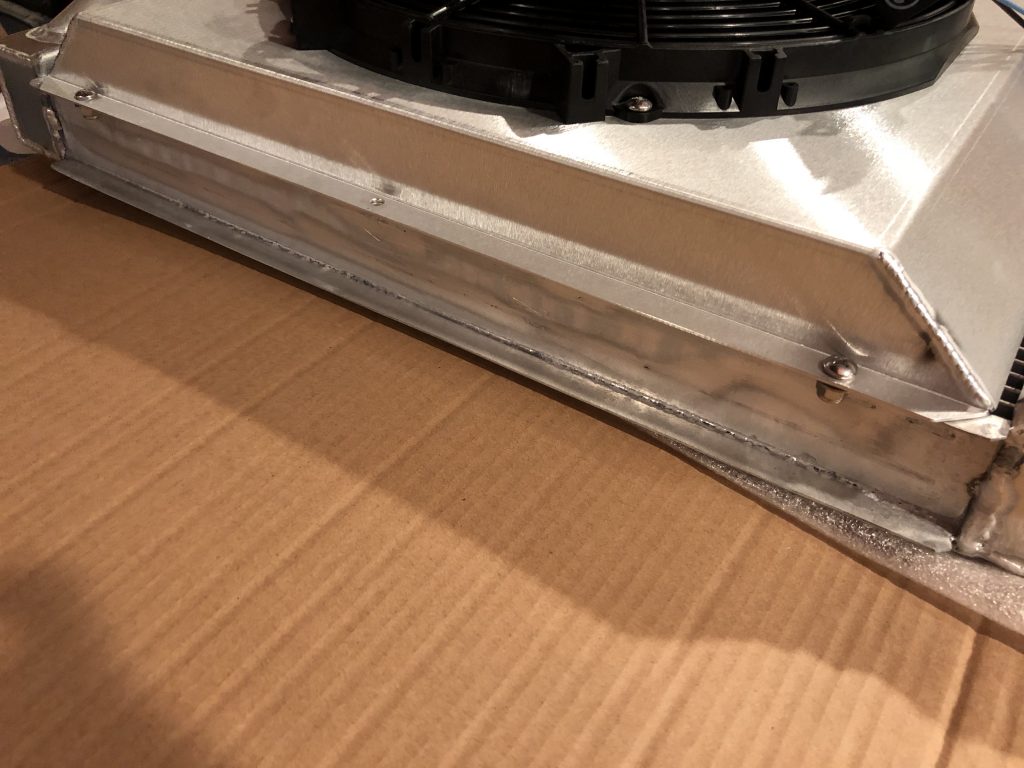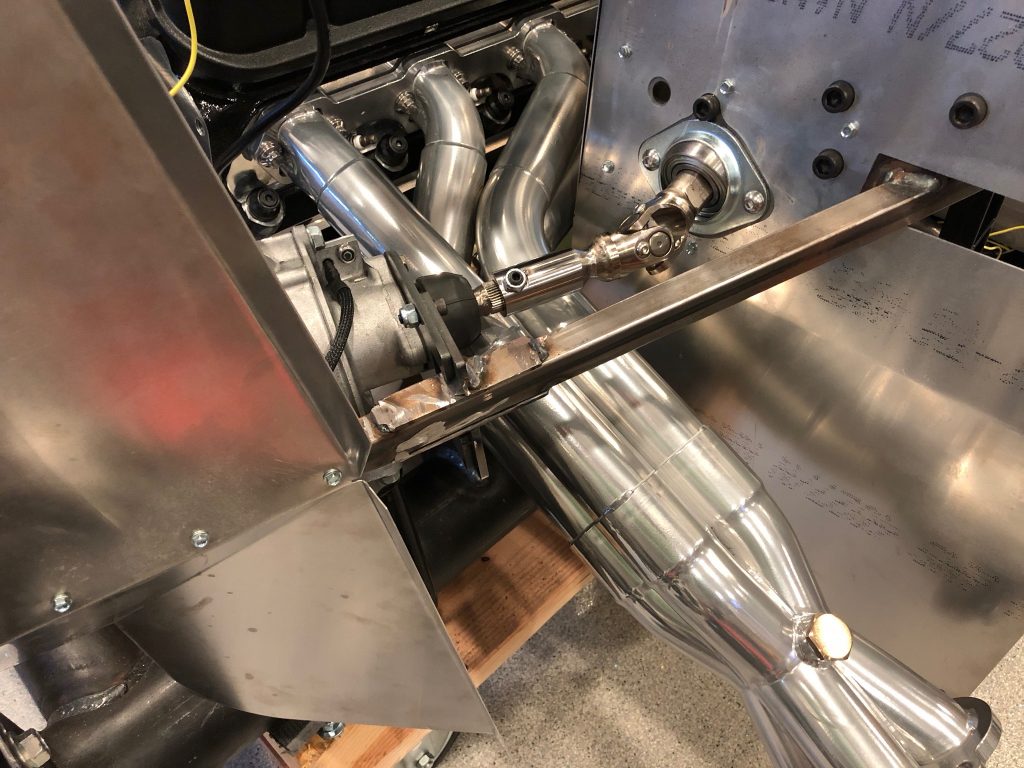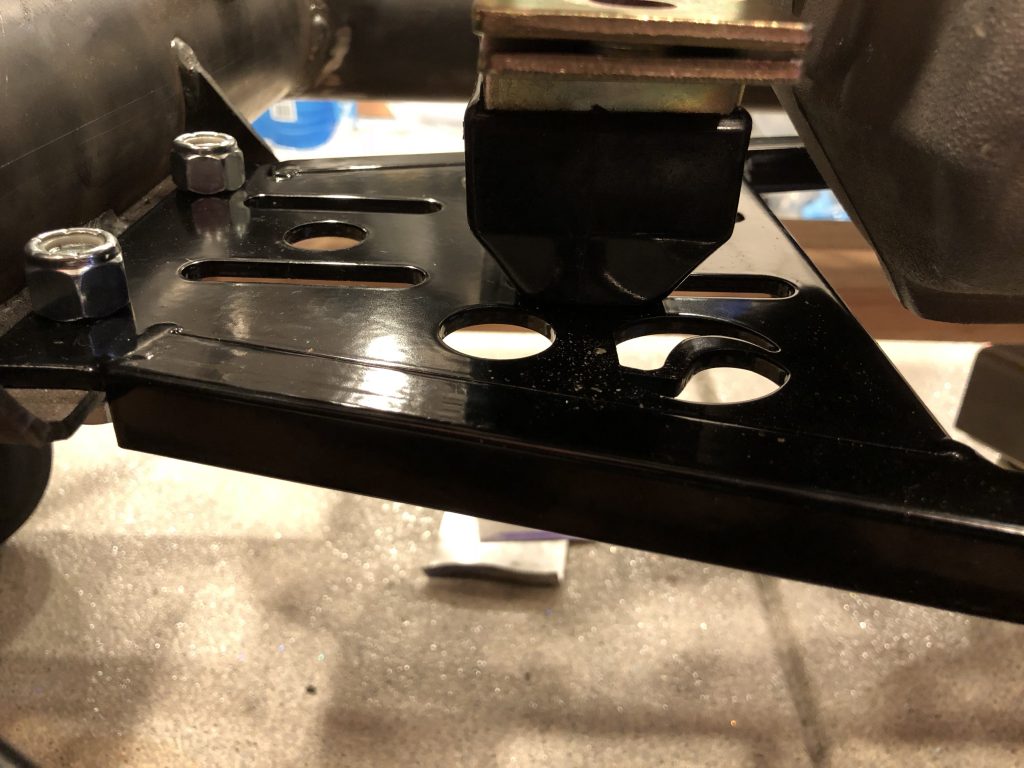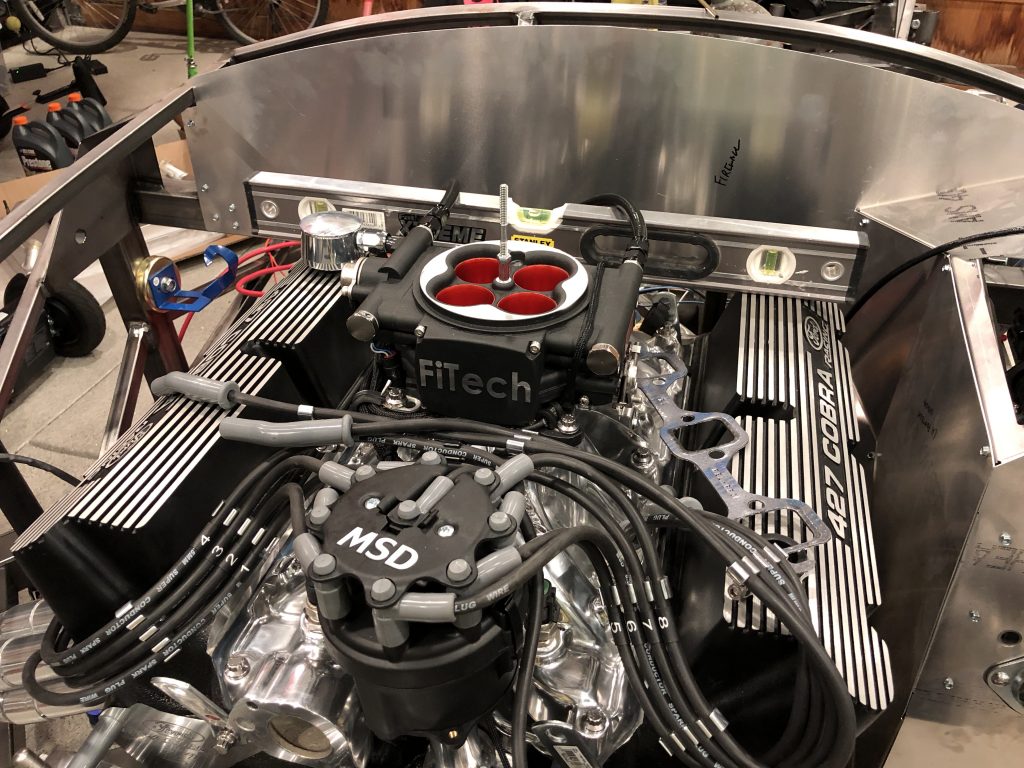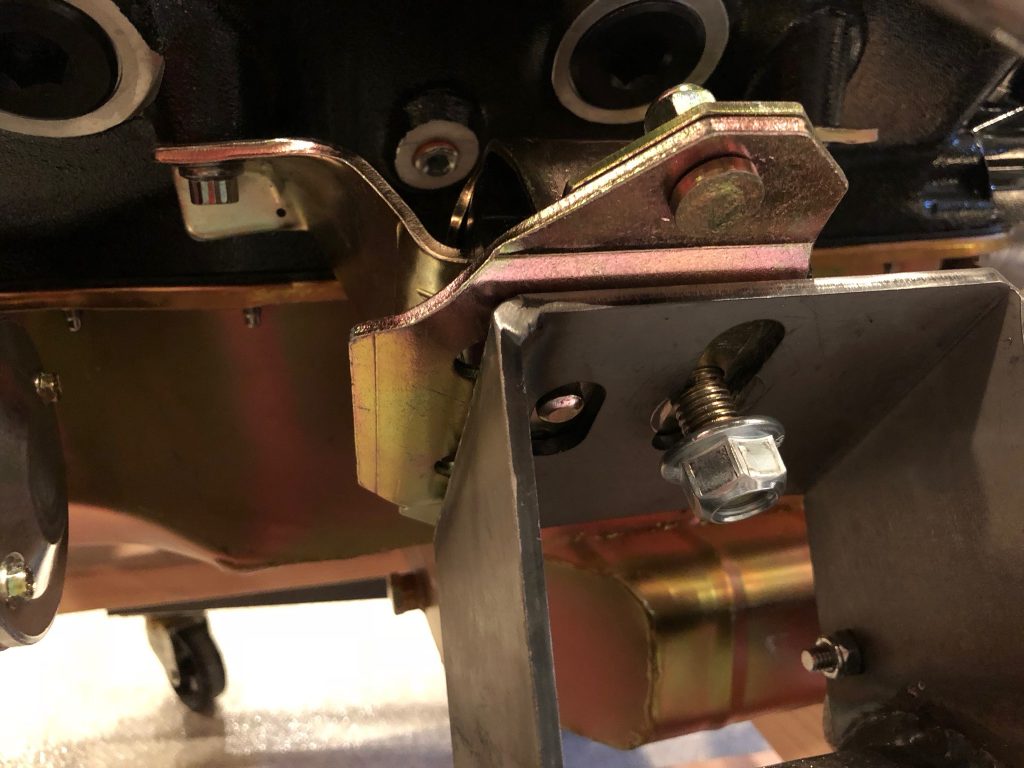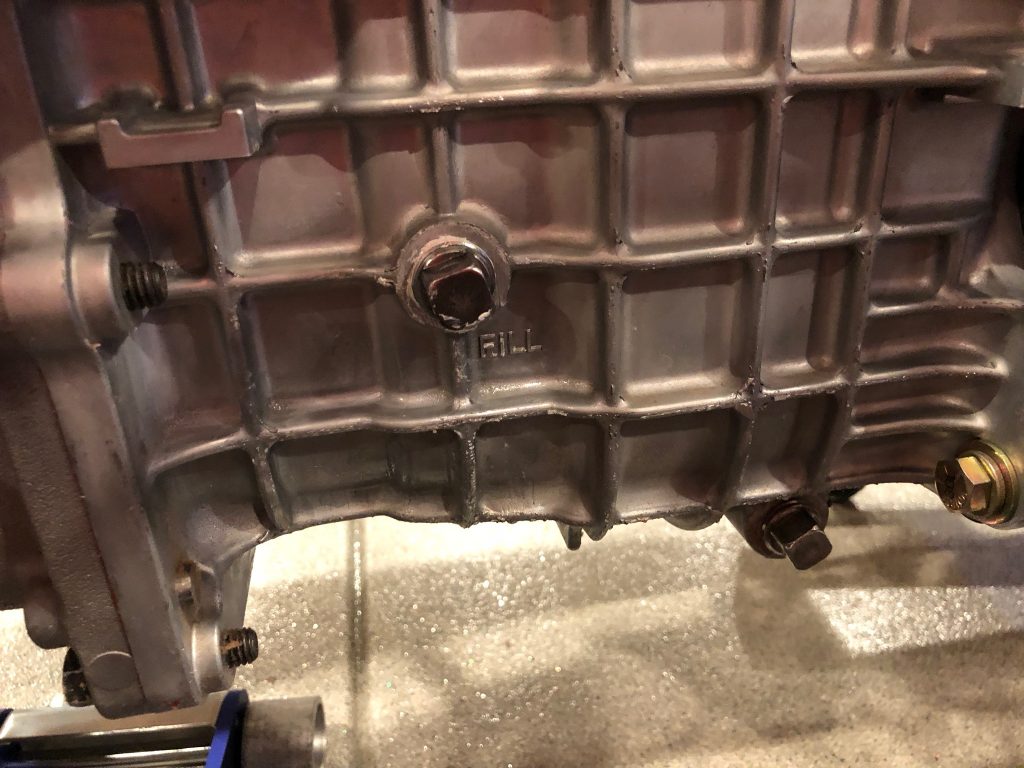We have a Halloween Party at our house every year, and it’s coming up in less than two weeks. I decided it would be fun to be able to fire up the engine at the party because I’m sure many people will be interested in the party. To that end, I’m going to hook everything back up as it was at the dyno shop along with the necessary additional bits to run the engine in the car (cooling system, starter, oil pressure and coolant temperature gauges, tachometer, etc.).
The dyno shop removed my oil pressure sender and hooked up their own hose to this extension. I reinstalled the sender and then hooked up a temporary pair of wires to drive the oil pressure gauge.
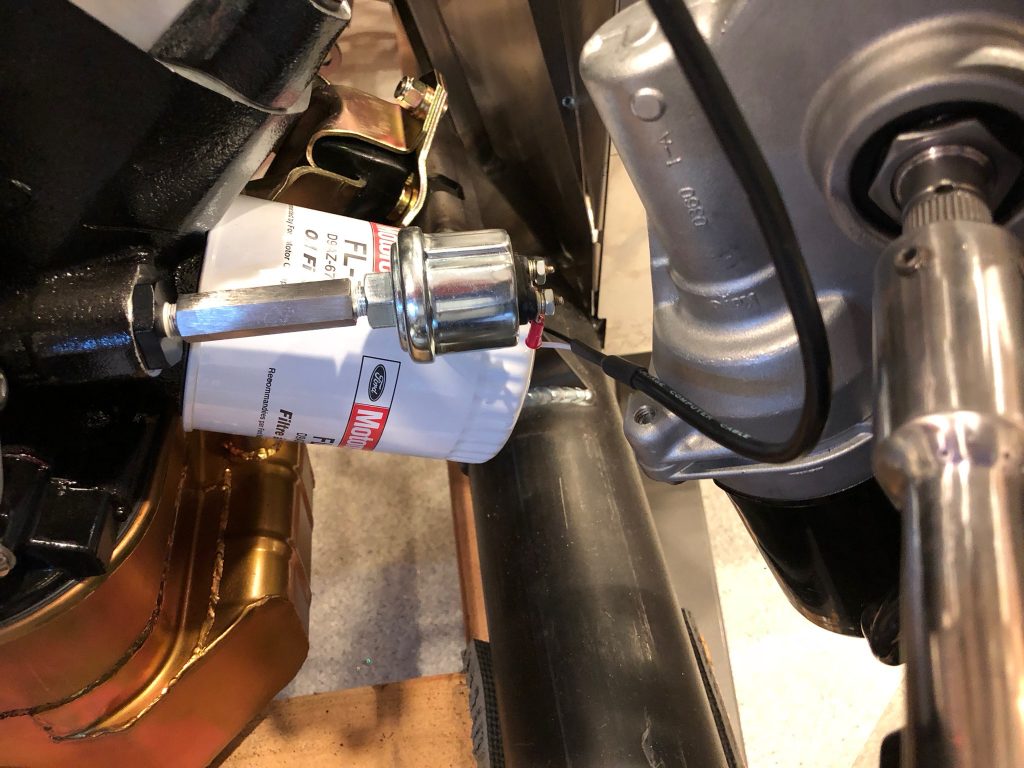
The dyno shop also installed their own coolant temperature sender, so I reinstalled my sender and hooked up the wires.
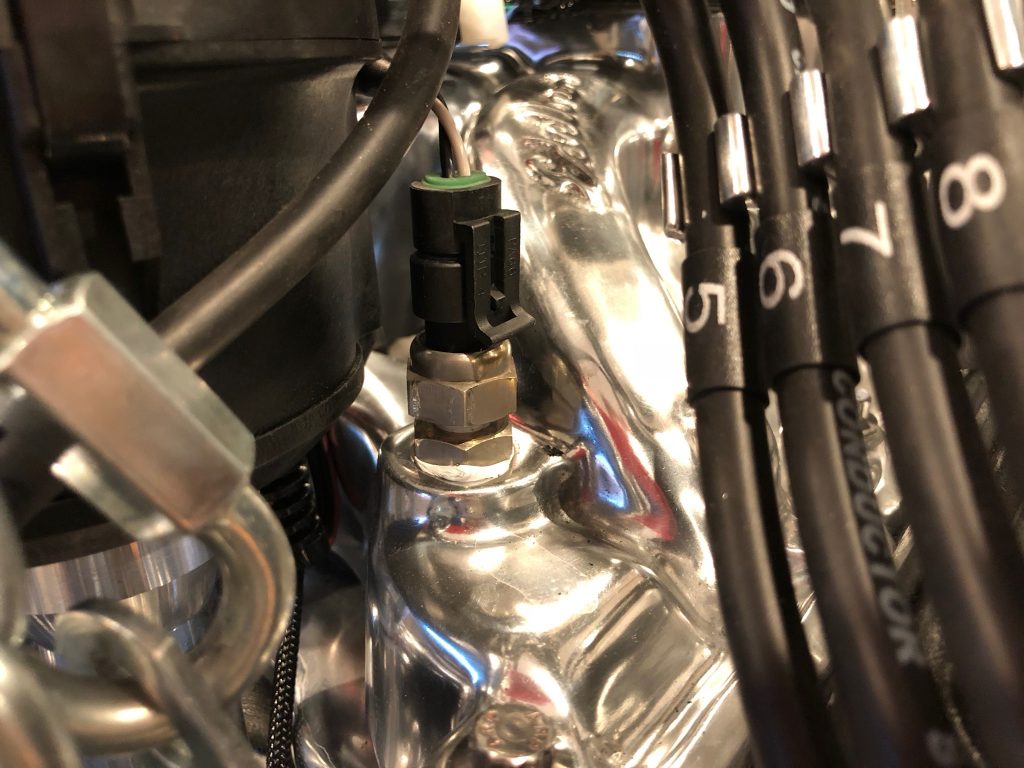
I also hooked up the engine ground strap from the right front engine mount bolts to the hole already provided in the mounting bracket.

To be able to start the car, I used some scrap aluminum to temporarily hold the ignition switch. I still need to wire this, but there are only a few connections to make.
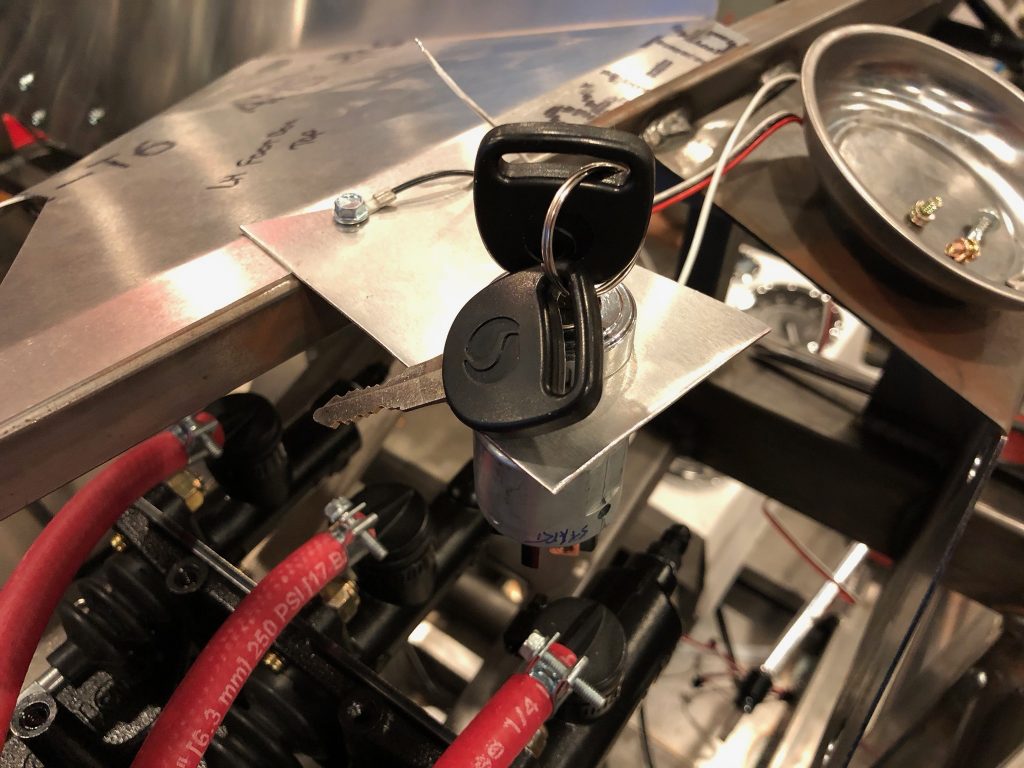
I don’t want to start the car unless I can monitor oil pressure at a minimum, but it’s minimal extra work to also hook up the coolant temperature gauge and tachometer. I had considered fabricating a larger aluminum plate to temporarily mount the gauges, but the cardboard box they came in will work just fine.
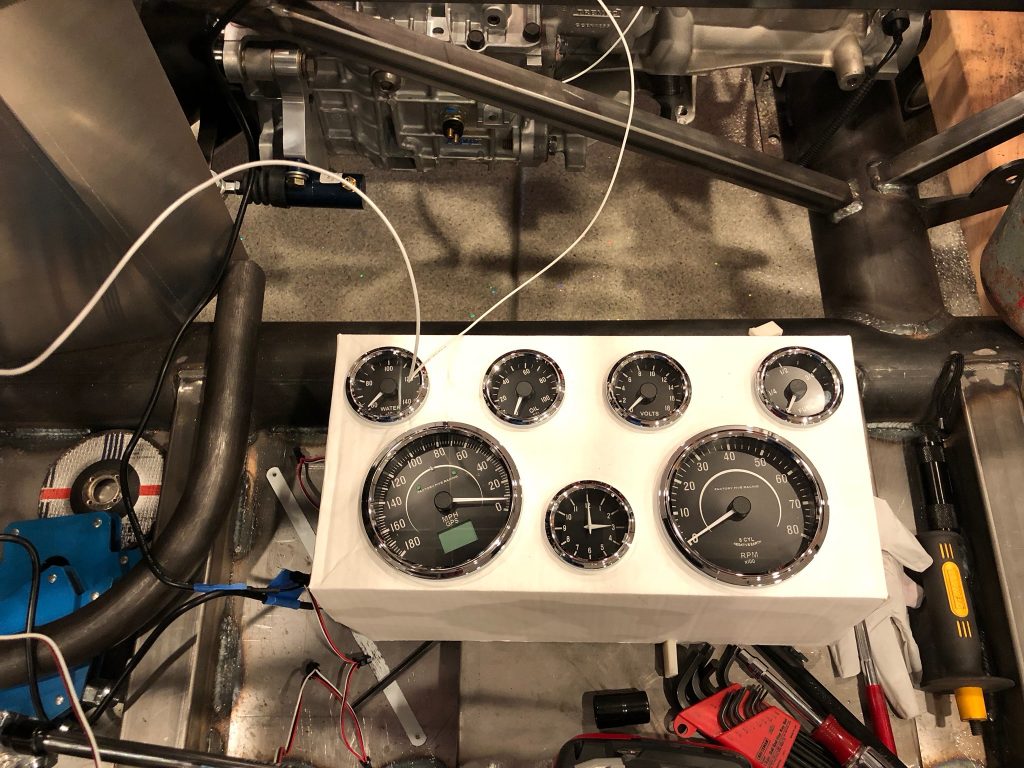
I also set the fuel tank on top of the rear part of the chassis and hooked up the fuel lines. This has 4-5 gallons of fuel in it right now, so it’s fairly heavy. I’ll probably end up burning off a good chunk of this doing some demo and tuning runs. I need to get this lighter before I start messing with mounting this in the rear of the chassis.


